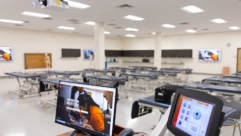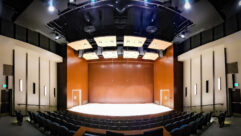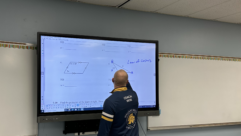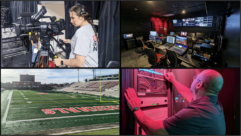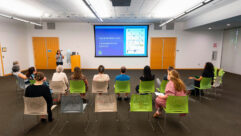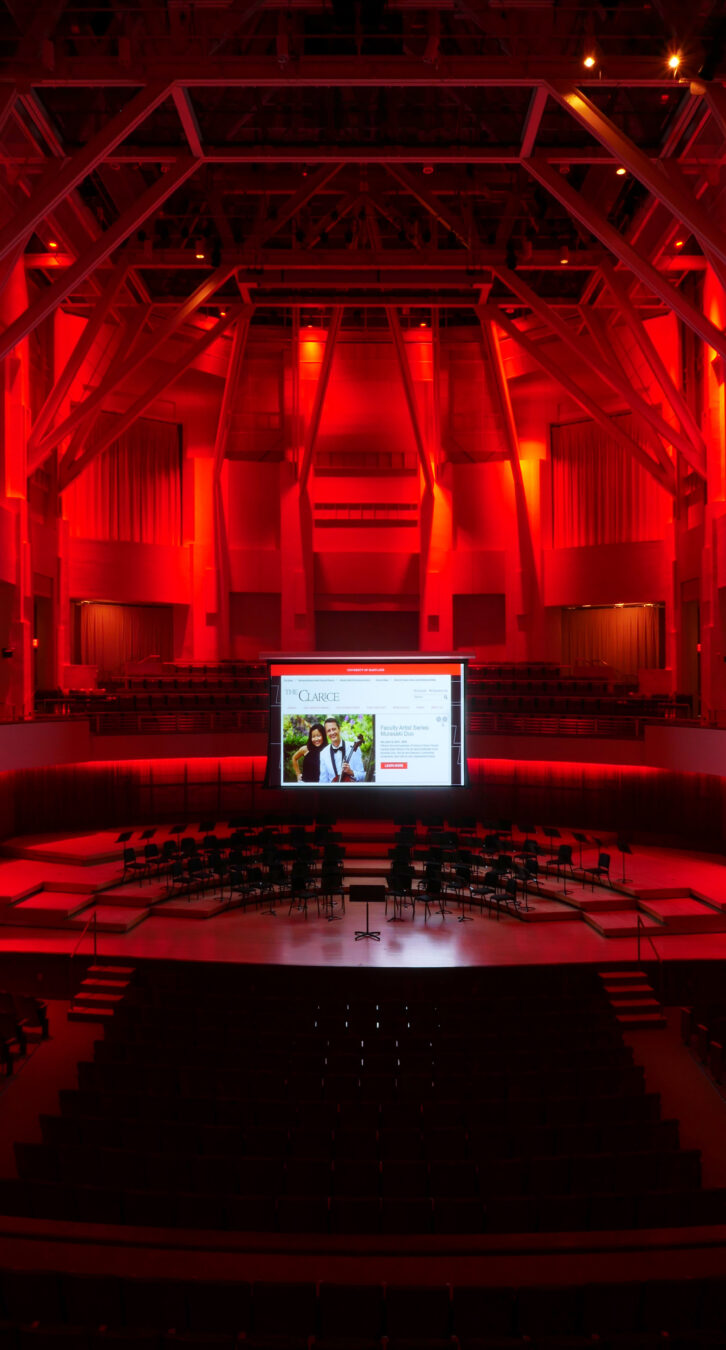
Folding and other portable projection screens can be very useful for spaces where there are multiple use requirements. But staff at the University of Maryland’s Clarice Smith Performing Arts Center found the use of a folding screen in one particular performance space was more of a hassle, with time-consuming setup and teardown plus accessibility issues
The Clarice includes several multi-use spaces, which are used by several different campus and community organizations. The space in particular need of a projection upgrade was the Elsie & Marvin Dekelboum Concert Hall, which features 962 seats and a 134-seat choir loft.
“We’ve had a projection screen in the concert hall for many years now,” said Mark Rapach, technical director for The Clarice. “Over the 12 years I’ve been here we’ve seen the use of it grow. It used to be something that a lot of orchestras weren’t interested in using, and now it’s becoming a much more immersive experience.”
In addition to issues with setup and teardown times there were also performance and durability issues with the old screen.
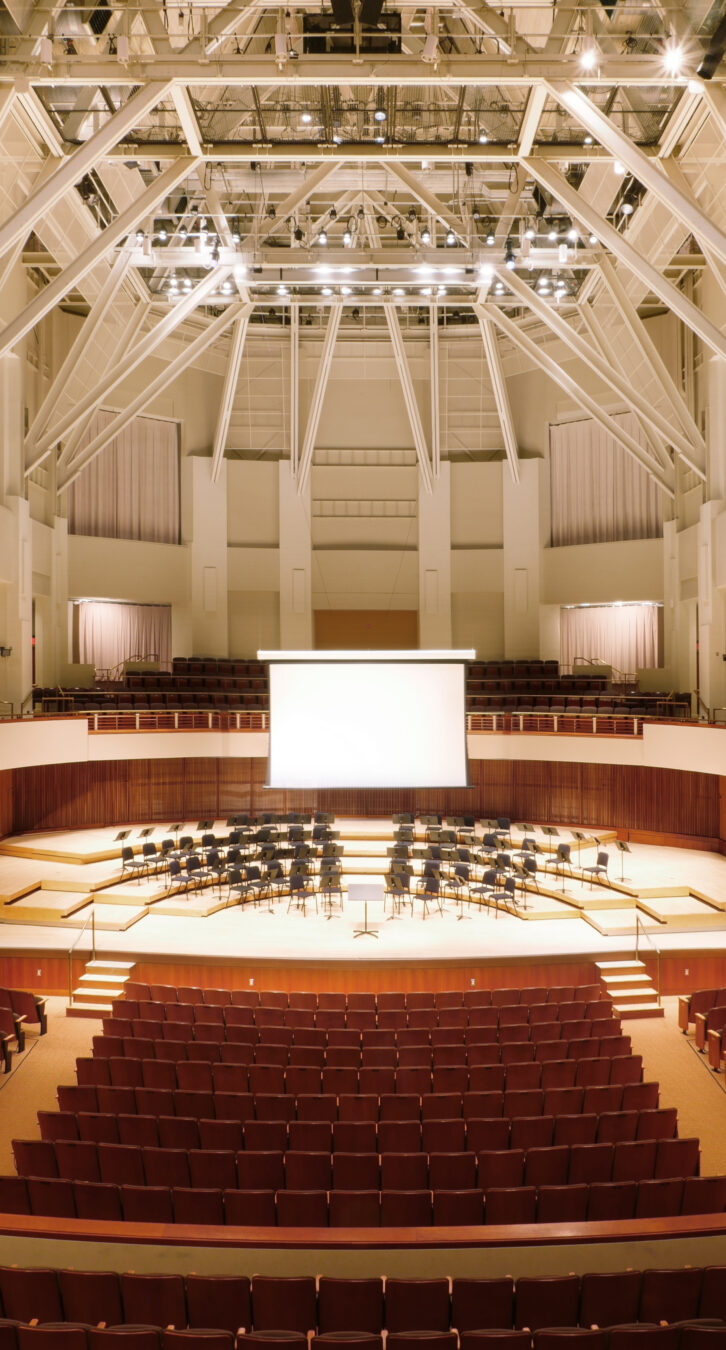 “The old screen was also certainly inadequate in size compared to the scope of the room,” said Jeffrey Reckeweg, technology manager for the performing arts center. “Also, every time you fold them, as they age, they get some kind of gunk on them, and they get dirt on them. We went through several pieces of hardware within the same size frame and had to buy a new screen every five years or so.”
“The old screen was also certainly inadequate in size compared to the scope of the room,” said Jeffrey Reckeweg, technology manager for the performing arts center. “Also, every time you fold them, as they age, they get some kind of gunk on them, and they get dirt on them. We went through several pieces of hardware within the same size frame and had to buy a new screen every five years or so.”
So, the team at The Clarice started looking for a new solution, something that would be safer, faster, more reliable, and repeatable. They worked with Bluum, a reseller and integrator formerly known as Troxell + Tierney, to conduct extensive research, including visits to other facilities. After comparing viewing surfaces and screen types they decided to go with the Draper Ropewalker.
The Ropewalker integrates a screen and lift together into a single headbox box, eliminating the need for extra black drop between the screen and high ceilings.
“We didn’t want anything that would interfere with what was taking place on the stage or just the natural beauty of the surroundings,” said Leah Pence, an Account Executive for Bluum. “The cabling allowed the product to seem like it was just floating in mid-air, really enhancing the space but not competing with it.”
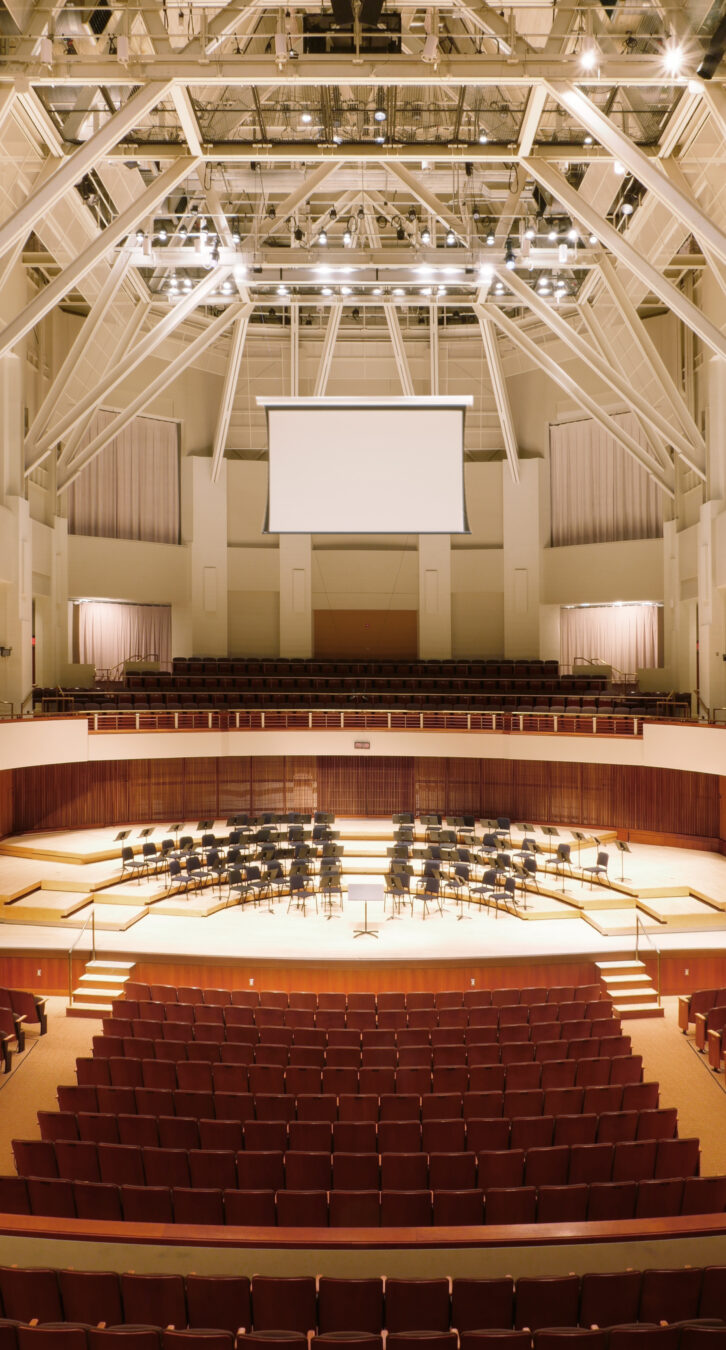 Another factor in the choice of the Ropewalker was ease of installation. Because Draper was able to provide precise locations required for rigging points, there was no guessing whether the product would fit.
Another factor in the choice of the Ropewalker was ease of installation. Because Draper was able to provide precise locations required for rigging points, there was no guessing whether the product would fit.
There were also safety considerations. “Whenever you’re suspending something, you really want to be mindful especially when we have students on the stage,” said Pence. “One of the selling points was that the screen has double cabling. Not that anything would go wrong, but if it does, the second cable is there to ensure that you don’t get the tipping and the swing effect of the screen.”
To control the Ropewalker Draper provided several RF remotes. This allows the team at The Clarice to control the screen from any location in the theater, including from the catwalk and the sound booth.
In the end, changing to the Ropewalker electric screen took setup and teardown time from two hours to five minutes.
“It really allows the place to be lit and still really carry that feeling across the screen,” said Pence.


